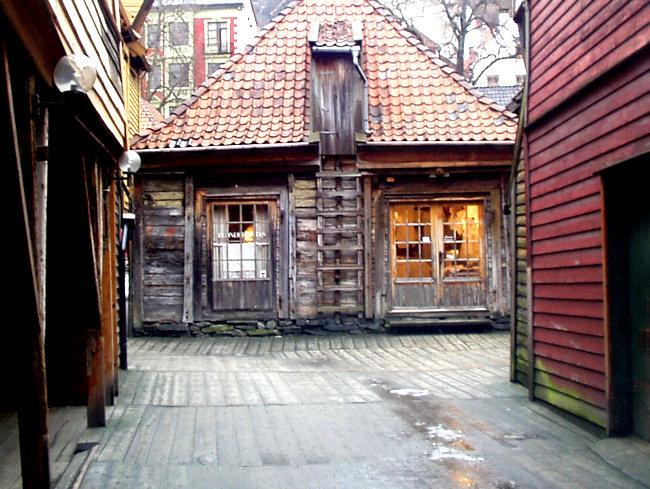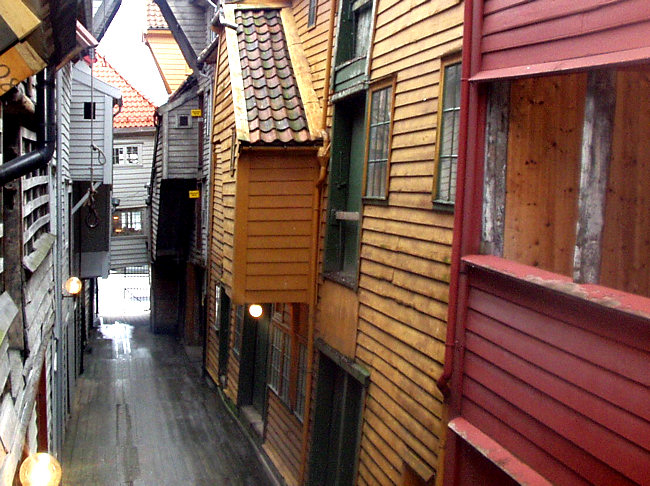Bergen Harbour's German Merchant District
On your weekend city break to Bergen in Norway you can learn how the Hanseatic League German merchants lived and worked in the large wooden warehouses in Bergens harbour.

From about 1360 to 1754 grain ships from countries we now know as Germany, Holland, Poland and Belgium would call at Bergen Harbour to unload sacks of wheat, barley and hops. In exchange they would load their ships for the return journey with Norwegian products like fish, Whale oil, whale bone, wood, furs and walrus tusks. The port of Bergen was very busy.
The German merchants were only allowed to live in the dockside warehouse complex on the street called Bryggen. Each trading house would comprise of a couple of merchant owners and a staff comprising of qualified 'journeymen' and apprentices. They had to live a celibate life style as there were not allowed to bring their wives or girlfriend with them to Norway. Fraternisation with the local Norwegian girls was frowned upon as the merchants did not want to upset the delicate relationship they had with the Bergen townsfolk.

Because of the risk of fire no candles or fires for heat were allowed in the giant long wooden warehouses. At the back of the complex, some distance away from the main building was a 'Schotstue'. It was common assemble room which doubled up as a kitchen and dining room.
You can see one in the above photograph. Here stoves could be used for cooking. They provided heat and candles were allowed to provide light. Make sure you go to the Hanseatic Museum during your visit. They have reconstructed what the merchant rooms would be like over 600 years ago. In the summer it is open every day. The rest of the year it is closed on Monday. You will find it at 1a Finnegaardsgaten, Bergen, Norway
Travel books

